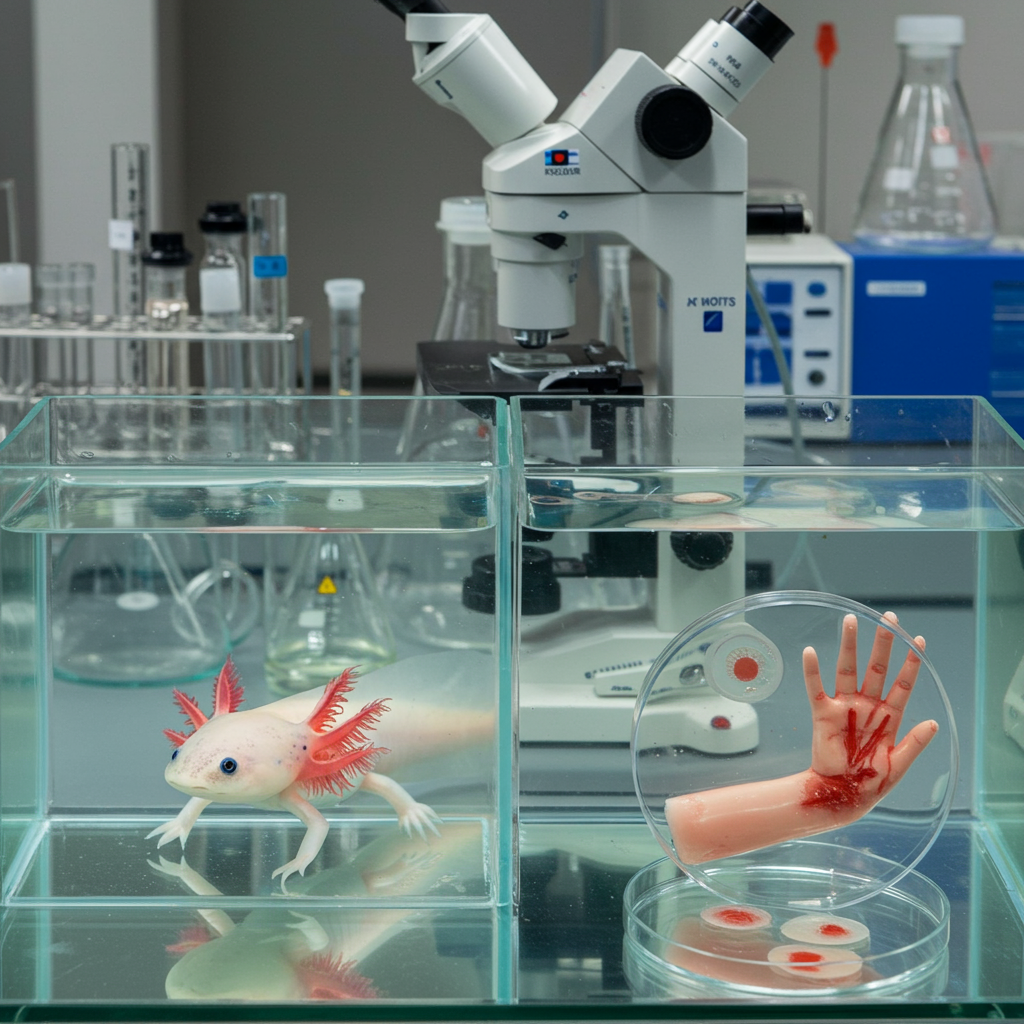Unlocking the Secrets of Regeneration: How the Axolotl Could Pave the Way for Human Limb Regrowth
For centuries, scientists have marveled at the incredible ability of certain creatures to regrow lost body parts. Among the most studied of these regenerative champions is the axolotl, a unique salamander from Mexico renowned for its capacity to regenerate not just limbs, but also heart, brain, and spinal cord tissue perfectly. This extraordinary biological feat has long held the promise of revolutionizing regenerative medicine, potentially offering hope for humans who have suffered tissue loss or amputation.
Recent groundbreaking research is bringing us closer to understanding the intricate biological mechanisms behind the axolotl’s superpower. Studies, particularly by researchers at Northeastern University, are zeroing in on specific molecules and genes that act as crucial guides during the regeneration process.
Retinoic Acid: The Regeneration GPS
A key player identified in the axolotl’s regenerative toolkit is retinoic acid. This small molecule, derived from Vitamin A and commonly used in acne treatments (like retinol and Accutane), appears to function like a “GPS device” for regenerating tissue.
When an axolotl loses a limb, retinoic acid is detected in varying concentrations along the regenerating stump, creating a gradient. Higher levels signal to cells that they are in a position closer to the shoulder, while lower levels indicate a position closer to the fingertips. This positional information is vital, guiding cells to determine precisely what structures (bone, muscle, nerve, skin) need to be rebuilt at that specific location to form a complete and correctly patterned limb.
Controlling the Process: Enzymes and Genes
The research revealed that the axolotl’s body has a sophisticated system for regulating this crucial retinoic acid gradient. An enzyme called CYP26B1 is responsible for breaking down retinoic acid. By controlling where and when CYP26B1 is active, the axolotl ensures the retinoic acid gradient is maintained correctly. Experiments where this enzyme’s activity was blocked resulted in the axolotls regenerating malformed limbs, sometimes growing upper arm sections where a forearm should have been, proving the critical role of this regulatory enzyme.
Scientists also looked at specific genes involved in limb formation, such as Shox and Meis1. Disrupting the Shox gene in axolotls led to stunted limb growth, particularly in the upper arm and forearm sections, while digits developed normally. This is particularly intriguing because mutations in the human SHOX gene also cause skeletal deformities and short stature, including in the limbs. This similarity suggests that humans and axolotls may share ancient genetic blueprints for limb formation, though these pathways remain active for regeneration in axolotls throughout life but are largely dormant in adult humans.
Why Humans Form Scars, While Axolotls Regenerate
The central mystery isn’t necessarily that humans lack the genes for regeneration – evidence suggests we might have the foundational genetic machinery, similar to what’s used during embryonic development when our limbs first form. The key difference appears to be that when injured, adult human cells (like fibroblasts) primarily form scar tissue, a protective but non-functional patch. Axolotl cells, conversely, seem capable of reawakening these embryonic developmental pathways, following the molecular “GPS” signals like retinoic acid to rebuild complex structures instead of just scarring over.
Understanding how axolotl cells “listen” to these regenerative cues and resist forming scar tissue is a major focus. The ability of axolotls to pause epigenetic aging after about four years and the finding that regenerated tissue appears epigenetically younger than the rest of the animal hints at a form of epigenetic rejuvenation linked to their regenerative powers.
The Broader Field of Regenerative Engineering
While the axolotl offers fundamental insights into the chemical and genetic signals for regeneration, other research in regenerative engineering explores different approaches. For instance, researchers at UConn Health are developing xenograft hydrogels derived from processed pig muscle to regenerate muscle tissue, particularly for severe injuries causing significant muscle loss. This demonstrates the multifaceted nature of regenerative science, tackling different tissues and mechanisms.
The Path to Human Application
Translating the axolotl’s abilities to humans remains a significant challenge, potentially years away. However, every discovery about the molecules, enzymes, and genes controlling regeneration in these remarkable creatures brings us closer to identifying the correct chemical signals needed to potentially activate similar processes in human cells. The hope is that by deciphering the axolotl’s secrets, we can eventually move beyond scar formation and unlock the dormant regenerative potential within the human body, opening new frontiers for healing and recovery.




